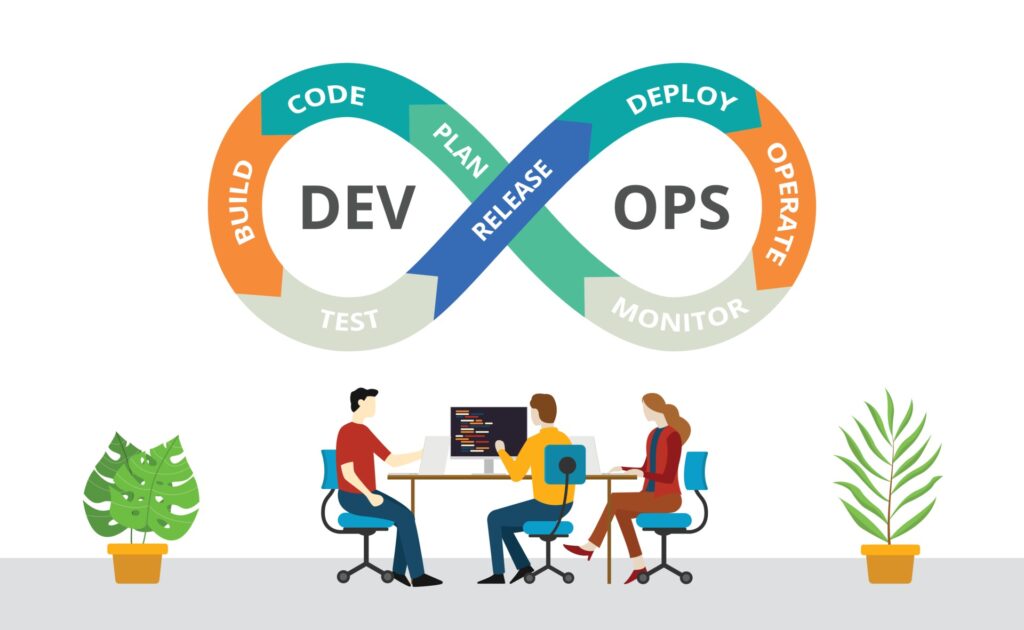DevOps has emerged as a transformative approach toward software development and delivery. However, despite the numerous advantages we discussed last week, implementing DevOps is not without its fair share of challenges.
In this blog post, we’ll explore some of the common difficulties companies face when adopting DevOps, along with solutions to overcome them.

7 Challenges of DevOps
-
Technical and Organizational Transition Challenges
Most companies are prevented from implementing DevOps by dealing with outdated systems, rebuilding their apps to use microservices architecture, or migrating them to the cloud.
In addition to modifying your product, you might need to restructure your team and alter internal procedures to conform to the DevOps model. This can include changing team roles, adding new team members, implementing new tools, etc.
You can overcome this challenge by launching a pilot project first to evaluate if this approach is suitable for your company. You can then determine whether your team is ready and will be better equipped to develop a roadmap for a comprehensive implementation.
-
Replacement of Expertise Teams with Cross-Functional Teams
Software development used to be done by teams focused on a specific task, such as interface, server-side, and database. On the other side, establishing a DevOps culture encourages you to abandon siloed specialty teams in favor of cross-functional teams that are ultimately responsible for the features and products they provide.
-
Choice of Tools
When switching to the DevOps model, you have access to a wide variety of DevOps tools, which some may view as an advantage. But this makes it harder to pick the ones that exactly suit your team’s requirements.
Additionally, changing the tools later can be very difficult and a huge waste of time and effort. All your projects will need to be transferred, and you’ll need to allow your team some time to adjust.
Engaging with an experienced CTO or consultant to help you make the right decisions and assemble and utilize the necessary tools can help you overcome this challenge.
You should keep in mind that it’s a mistake to put too much emphasis on tools. This wrong focus comes from the necessity to train your employees to use DevOps technologies and ensure they’re integrated well with your existing infrastructure.
-
Conflicts Between Development and Operations Tools
IT Operations and Development have always used different technology and kept track of different KPIs. Consequently, choosing which teams to keep presents a challenge when the two teams are combined.
-
Replacement of Older Applications with Microservices
Using an outdated infrastructure could put your business behind competitors and bring issues with platforms and applications that are no longer maintained. Faster innovation and development are possible by replacing older and outdated infrastructure and applications with newer and more modern microservices architectures.
However, switching to microservices doesn’t come without its challenges, with increased complexity being the most significant.
-
Lack of Expertise and Talent
It’s difficult to find DevOps experts with practical expertise, which is why most businesses are wary of implementing it. According to PayScale, most specialists in this field have 1 to 4 years of experience. Because of this, DevOps engineer positions are among the hardest jobs to fill.
To help you solve this obstacle, consider working with an established IT consultancy or hiring specialized staff offshore.
-
Monitoring the Overall DevOps process
The difficulty of comprehensively monitoring the whole process is one of the most common issues with DevOps. There are many moving pieces in DevOps, and each one can be measured differently to determine its effectiveness.
A lack of clear sight over the entire process frequently results in blame-throwing and production delays. Any manual process designed with this in mind requires a lot of labor and runs the risk of inaccurate updates due to human mistakes.
Applications, measurements, services, and network components can all be continuously overviewed thanks to continuous monitoring tools, which can help you when dealing with this challenge. It allows users to see the infrastructure from above and find critical problems.
Along with offering helpful services to address these problems, it also offers a high level of scalability and adaptability. Additionally, it offers up-to-date logs of all DevOps incidents, mistakes, crashes, and system failures.
This way, teams can pinpoint exactly where and what went wrong, and they can then make the necessary adjustments to fix it.
Conclusion
The benefits of implementing DevOps practices are numerous, from improved software quality to increased agility. However, it’s important to acknowledge and address the challenges it can bring, such as the need for organizational change, to fully unlock the potential of DevOps.
Ready to harness the power of DevOps for your business? Contact us today to unlock the various benefits of streamlined software development and delivery! Let us help you navigate the challenges and lead your organization toward success.
- AI in IoT: Benefits, Components, and Impact - April 10, 2025
- AI and Low-Code/No-Code: A New Era of Development and Innovation - February 25, 2025
- The Ultimate Guide to AI in IT Support: The Tools, Benefits & Challenges You Must Know - February 11, 2025
